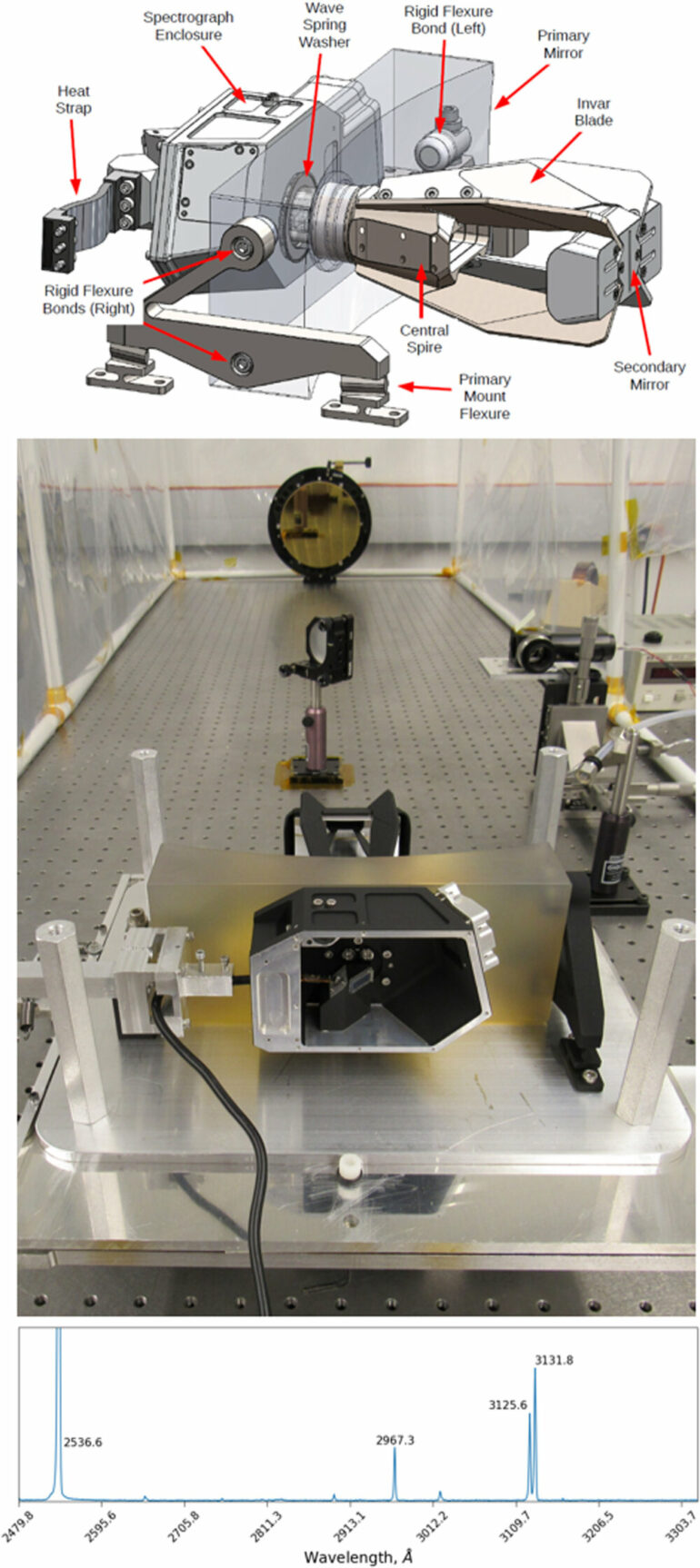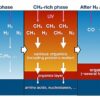A spacecraft the size of a cereal box has collected precise measurements of the atmospheres of large and puffy planets called “hot Jupiters.” The findings, led by a team from the University of Colorado Boulder, could help reveal how the atmospheres around these and a host of other worlds are escaping into space.
The observations are the first results to come from a hard-working NASA spacecraft known as the Colorado Ultraviolet Transit Experiment (CUTE).
Kevin France, principal investigator for the mission, will present the group’s results at a media availability Monday, Dec. 11 at 4:30 p.m. at the 2023 meeting of the American Geophysical Union in San Francisco.
The diminutive spacecraft, which measures just 14 inches in length, may be cute, but its scientific findings, published in The Astronomical Journal, are anything but. Since its launch in September 2021, CUTE has trained its single ultraviolet telescope at a series of hot Jupiters, some hundreds of light-years from Earth.
Hot Jupiters are among the hottest and angriest planets in the galaxy. As their name suggests, they are gas giants like our own Jupiter. These planets, however, hug much closer to their home stars, completing an orbit roughly once every several Earth days. In the process, stellar radiation cooks hot Jupiters to thousands of degrees Fahrenheit, and their atmospheres swell to enormous sizes, a bit like bread rising in an oven.
Researchers have long suspected that this constant pummeling from stellar radiation could strip away the atmospheres from around some exoplanets over millions-to-billions of years. Data from CUTE suggest that the process might not be so simple.
The CUTE team, which includes several undergraduate and graduate students, has observed seven hot Jupiters so far, with more on the way. Some of them seem to be losing their atmospheres, but others aren’t.
“The planets seem to be coming in all of the flavors,” said France, associate professor in the Laboratory for Atmospheric and Space Physics (LASP) and Department of Astrophysical and Planetary Sciences.
He added that CUTE is helping scientists to build out their field guide to the many kinds of planets that exist in the Milky Way galaxy—including those that look nothing like Earth’s close neighbors.
“We want to understand how our solar system fits into the family of solar systems in the universe,” France said. “That means understanding the big planets, the small planets, the ones that have life and the ones that definitely don’t—and all of the important physical processes that are operating on these planets.”
Getting hot in here
CUTE’s road to scientific success wasn’t easy.
When the spacecraft first entered into orbit around Earth, France and his colleagues quickly noticed that it seemed to be experiencing a few glitches—a normal problem for many small satellites, or CubeSats, which often test out technology that’s never before flown into space. In one case, the shutter that protected CUTE’s telescope kept snapping shut when it wasn’t supposed to.
The team, which included several undergraduate and graduate students, didn’t give up. The researchers commanded the spacecraft to open its shutter, then drained the battery that fed it, preventing the apparatus from shutting again.
“CUTE is still working and collecting data today,” France said. “When we got our first real science results, it was really exciting.”
CUTE observes distant planets as they pass in front of their home stars, causing ultraviolet light from those stars to dim in the process. In some cases, the spacecraft is so precise that it can detect when starlight dims by just 1%.
In a paper published in September in The Astrophysical Journal Letters, the researchers described their observations of a world called WASP-189b. This planet orbits a star in the constellation Libra more than 300 light-years, or thousands of trillions of miles, from Earth. It’s also incredibly toasty, with its atmosphere reaching temperatures of roughly 15,000 degrees Fahrenheit, according to the team’s results. That’s thousands of degrees hotter than the surface of the sun.
CUTE’s observations also suggest that gas is escaping from around WASP-189b at a similarly staggering rate of about 400 million kilograms (nearly 900 million pounds) per second.
Planets evolving
Not all of the planets CUTE has studied in its first two years were so exciting. In unpublished results, the team observed a second planet called MASCARA-4b that didn’t seem to be losing much gas at all. Others, like KELT-9b, fell somewhere in the middle.
France and his colleagues hope that their results could help uncover why some planets lose big chunks of their atmosphere, while others remain mostly unchanged. He suspects that it has to do with a combination of the planets themselves (larger planets generate a stronger gravitational pull) and the dynamics of their stars (more active stars likely wreak more havoc on planets than sedate stars).
Those same processes potentially sculpt planets, both in and out of Earth’s solar system, over time. Scientists, for example, theorize that Mars once hosted a much thicker atmosphere, but the sun eroded it away over billions of years.
Atmospheric escape may also explain the origin of a class of planets known as “super Earths,” which are slightly larger than our own world.
“There’s a lot of evidence that suggests that super Earths begin as planets the size of Neptune with large, puffy atmospheres, which then lose so much mass that all that is left is the rocky core and possibly a thin atmosphere,” France said.
CUTE’s greatest legacy may be its impact on students, he said. The mission’s small team of about 20 people were involved in almost every aspect of the spacecraft’s life—from building the satellite to launching it, sending it commands, then downloading and analyzing scientific data. CUTE is currently orbiting about 326 miles (525 kilometers) above Earth’s surface, and is expected to reenter the atmosphere by 2027.
“All of these things are what happens on big NASA missions, just on a much larger scale,” France said. “Our students and early career scientists are getting the full experience from the proposal stage all the way to getting out the science product.”
More information:
Kevin France et al, The Colorado Ultraviolet Transit Experiment Mission Overview, The Astronomical Journal (2023). DOI: 10.3847/1538-3881/aca8a2
Arika Egan et al, The On-orbit Performance of the Colorado Ultraviolet Transit Experiment Mission, The Astronomical Journal (2023). DOI: 10.3847/1538-3881/aca8a3
A. G. Sreejith et al, CUTE Reveals Escaping Metals in the Upper Atmosphere of the Ultrahot Jupiter WASP-189b, The Astrophysical Journal Letters (2023). DOI: 10.3847/2041-8213/acef1c
Provided by
University of Colorado at Boulder
Citation:
A 14-inch spacecraft delivers new details about ‘hot Jupiters’ (2023, December 11)



